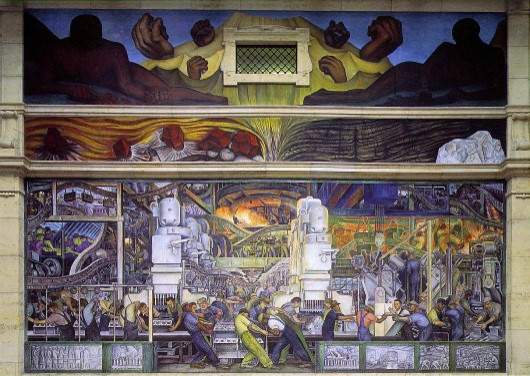Detroit Institute Of Arts’ Masterpieces May Be Sold To Pay City’s Debt

It’s no secret that Detroit has had a rough go of it lately, but news that the Detroit Institute of Arts’ precious collection of works by Van Gogh, Picasso, Matisse, Warhol and others may be headed to the auction block to satisfy creditors of the financially distressed city has shocked even the most jaded onlookers. The Detroit Free Press broke the news last week that Detroit emergency manager Kevyn Orr was “considering whether the multibillion-dollar collection at the Detroit Institute of Arts should be considered city assets that potentially could be sold to cover about $15 billion in debt” as the city heads toward a possible bankruptcy filing.
The newspaper -- which put the value of the museum’s 38 most famous works at $2.5 billion -- noted that liquidating DIA art to pay down debt would likely be “a monstrously complicated, controversial and contentious process never before tested on such a large scale and with no certain outcome.”
The case is atypical on many fronts. Unlike most major civic museums, DIA’s building and collection is actually owned by the City of Detroit, while a governing nonprofit institution oversees the day-to-day operations under a contract that runs through 2018. However, the museum made it clear over the weekend that the city couldn't (in its opinion) sell the artwork under current conditions.
“The DIA strongly believes that the museum and the city hold the museum’s art collection in trust for the public,” DIA said in a statement. “The DIA manages and cares for that collection according to exacting standards required by the public trust, our profession and the operating agreement with the city. According to those standards, the city cannot sell art to generate funds for any purpose other than to enhance the collection. We remain confident that the city and the emergency financial manager will continue to support the museum in its compliance with those standards, and together we will continue to preserve and protect the cultural heritage of Detroit.” DIA officials said they had hired New York bankruptcy attorney Richard Levin, who advised General Motors, to suggest ways to protect the collection from possible losses.
Michigan Gov. Rick Snyder appointed Orr as emergency manager in March, giving him a wide range of power in dealing with Detroit’s fiscal matters. A representative of Orr told the Detroit Free Press the city had “no interest in selling art,” but added: “It is an asset of the city to a certain degree. We’ve got a responsibility under the act to rationalize that asset, to make sure we understand what it’s worth. We have to look at everything on the table.”
The scope of Orr’s power as an emergency manager to sell the masterpieces -- or any other major assets -- would likely be tested in court, and lawyers say that if DIA was forced to sell some of its treasures, works bought by the city or the museum would likely be the first to go. Those pieces donated by patrons would likely be guarded by a wider legal shield, subject to the specific contractual agreement of each piece.
Thomas P. Campbell, director and CEO of New York’s Metropolitan Museum of Art, said in a statement Friday that the reports out of Detroit would “undoubtedly shock and outrage the city’s residents. They are joined by the millions of people who admire the Detroit Institute of Arts and the entire cultural community who rightly believe that art is a permanent, rather than a liquid, community asset. Even in the darkest days of New York City’s fiscal crisis of 1975, and the national economic meltdown of 2008, the cultural treasures closely identified with our own city were never on the table -- never considered an asset that might be cashed-in during a crunch to bridge a negative balance sheet.”
Founded in 1885 and housed in an imposing Beaux-Arts style building since 1927, DIA is considered a vestige of Detroit’s glory days. Its courtyard features priceless automobile-industry murals by Diego Rivera, and among the more than 60,000 works displayed inside are an 1887 Vincent van Gogh self-portrait, Henri Matisse’s “The Window,” Mark Rothko’s “Orange Brown,” Andy Warhol’s “Double Self Portrait” and Tintoretto’s “The Dreams of Men.”
© Copyright IBTimes 2024. All rights reserved.






















